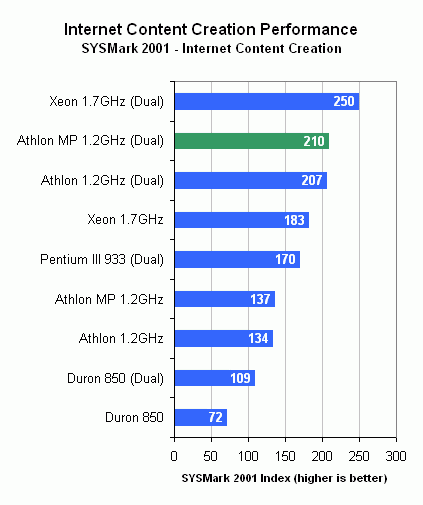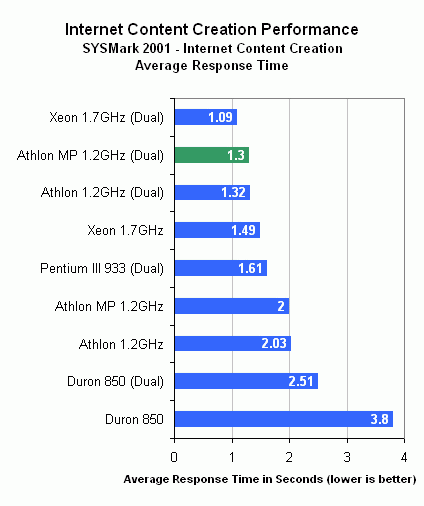AMD 760MP & Athlon MP - Dual Processor Heaven
by Anand Lal Shimpi on June 5, 2001 12:00 PM EST- Posted in
- CPUs
Internet Content Creation Performance
The Pentium 4 and Xeon have always done very well in this portion of the SYSMark 2001 test simply because of the bandwidth intensive nature of the benchmark. Although 760MP is quite impressive, even a regular Pentium 4 platform offers more memory bandwidth which can be very useful depending on the application scenario at hand. In this case, with Windows Media Encoder converting a video file while the system is working on a number of other content creation tasks, it is obvious that memory bandwidth is a necessity.
Here the Dual Xeon is still close to 20% faster than a pair of Athlon MPs on the Tyan Thunder K7 760MP platform. Being constrained by bandwidth limitations that won't go away by adding a second processor, the 760MP setup must take a second place position to the Xeon in this test.
The average response time metric mimics the SYSMark 2001 score for the Internet Content Creation test but it provides us with a tangible performance figure to look at and relate to the real world. In this case, for the Athlon MP, moving to dual processors decreased average response time of applications by 35%. Again you will notice that the performance increase is far from double when you move to a dual processor setup mainly because of the overhead associated with going to multiple processors including cache coherency issues.












0 Comments
View All Comments